“Korean War: CIA Covert Operations History – The Secret Conflict in Korea” has been added to your cart. View cart
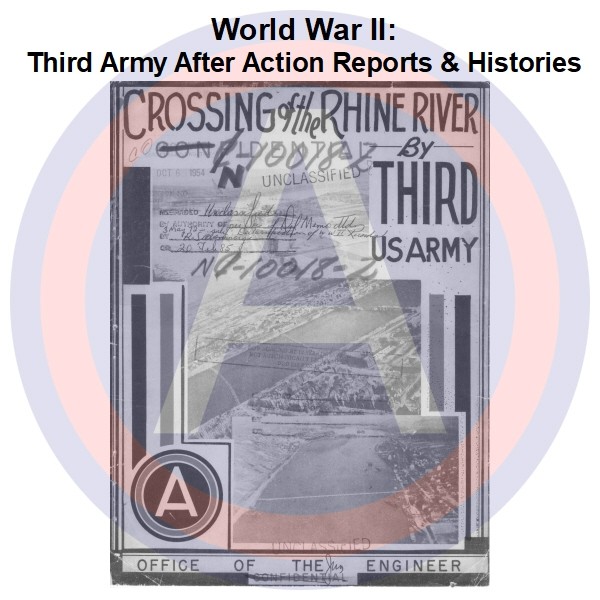
WWII: Third Army After Action Reports
$19.50
Category: War Files
Tags: world war 2, World War II, WWII
Description
Patton’s Third Army: A World War II Chronicle
This timeline primarily focuses on the Third United States Army’s activities, particularly during World War II in Europe, as detailed in the provided sources.
Pre-World War II & Training Phase:
- November 7, 1918: The Third United States Army is first activated as a formation during World War I in Chaumont, France.
- February 29, 1932: G.S. Patton Jr., then a Major of Cavalry, prepares a memorandum titled “The Probable Characteristics of the Next War and the Organization, Tactics, And Equipment Necessary To Meet Them,” advocating for a professional force based on maneuver.
- 1933: XII Corps, which would later become a spearhead of Patton’s Third Army, is constituted in the Organized Reserves.
- May 1941 – February 1943: Lieutenant General Walter Krueger commands the Third Army, making it a highly regarded training army in the United States.
- August 29, 1942: XII Corps is activated at Columbia, South Carolina.
- February 1943: Lieutenant General Courtney H. Hodges takes command of the Third Army. During this period, it functions as a “gigantic training army.”
- February 16-26, 1943: Third Army maneuvers are conducted in Louisiana, observed by officers from the C&GS School.
- July-August 1943: “Alert orders” for overseas movement of troops begin to flood Third Army Headquarters.
- November 19, 1941 (superseded by later directive): Administrative Instructions No. 2 for Third U.S. Army are published.
- December 30, 1943: Third Army has moved a total of 208,566 officers and men, including five divisions, to ports for overseas shipment.
- December 31, 1943: Third Army is transferred to combat army status.
- January 1, 1944 (0830): Third Army receives the call for which they had been waiting, confirming their combat readiness.
- January 15, 1944: The entire Third Army headquarters is “POM” (prepared for overseas movement), and an advance detachment departs for the port.
- February 15, 1944: Third Army’s official readiness date for combat.
- January 1944 – May 1945: U.S. Army’s collection and processing of combat intelligence in Northern Europe is active.
World War II Combat Operations (European Theater of Operations):
- July 25, 1944: American forces under LTG Omar Bradley rupture German defenses in Normandy, leading to the “breakout.”
- July 29, 1944: Twelfth U.S. Army Group directives begin, extending through May 5, 1945.
- August 1, 1944: Third United States Army, under the command of Lieutenant General George S. Patton, Jr., becomes operational in France. This marks the beginning of their participation in eight major operations.
- August 1944 – mid-September 1944: Third Army engages in highly mobile warfare across France, breaking out of Normandy into Brittany, conquering most of the peninsula, securing the Loire line, and sweeping within 60 miles of the German border. The XIX Tactical Air Command supports these operations, completing “Twelve-Thousand Fighter-Bomber Sorties” in their first month.
- August 4, 1944: Third U.S. Army directives begin, extending through May 7, 1945.
- August 5, 1944: The 80th Infantry Division lands at Utah Beach, becoming a “work horse” for Patton’s Third Army.
- August 20, 1944: The 80th Infantry Division takes Argentan, contributing to the creation of the Falaise Pocket.
- Late August – September 1944: Third Army conducts a swift “dash” across France, cutting through Saint-Mihiel, Châlons, and Commercy, but is halted by supply shortages at the Seille River.
- September 25 – October 24, 1944: The Foret de Parroy offensive occurs. The 79th Infantry Division, part of XV Corps (initially Third Army, then reassigned to Seventh US Army on September 29), conducts the main attack to clear the forest. Strong German resistance necessitates extensive engagement.
- September 25 – November 7, 1944: The 80th Infantry Division maintains an aggressive defense west of the Seille River, preparing for the push into the Saar Basin.
- November 8, 1944: Third Army launches an offensive, reducing Metz and entering the Siegfried Line defenses in the Saar Valley. The 80th Infantry Division advances through Delme Ridge, Faulquemont, and St. Avold.
- Early November 1944: The 84th Infantry Division lands on Omaha Beach, moves into the Netherlands for an offensive into Germany.
- December 7, 1944: The 80th Infantry Division is relieved by the 6th Armored Division near Saarbrücken.
- December 12, 1944: Engineer, Third Army, prepares a “Traffic Circulation Diagram” for Administrative Order No. 22.
- December 1944 – January 1945: The German Ardennes Offensive (Battle of the Bulge) occurs.
- Third Army and XIX Tactical Air Command are “suddenly thrust into an emergency counter-attack role.”
- The 84th Infantry Division is diverted to Belgium to stop the German offensive, fighting in the “Bastogne Bulge.”
- William Freidman’s “Critique Of Third U.S. Army (1945)” analyzes intelligence failures before this offensive.
- December 16, 1944: The German Ardennes counteroffensive begins.
- February 24 – March 23, 1945: “Consumption Rates of US Forces in the Final Advance to the Rhine” are tracked for the First, Third, and Ninth Armies.
- March 1945: General George S. Patton Jr. is “anxious” for his forces to cross the Rhine River, aiming to beat Field Marshall Montgomery.
- March 21, 1945: The Fifth Infantry Division is alerted to prepare for a surprise night crossing of the Rhine at Oppenheim.
- March 22, 1945: The first assault crossing of the Rhine in modern history begins at Nierstein, Germany. The 11th Infantry Regiment of the 5th Infantry Division, supported by the 204th Engineer Combat Battalion, successfully establishes a bridgehead.
- Within five days of March 22, 1945: Three more Rhine crossings are successfully executed by Third Army, and all resistance along their Rhine front collapses.
- March 23 – April 25, 1945: “Consumption Rates U.S. Forces from the Rhine to the Elbe” are tracked, covering the crossing of the Rhine, envelopment of the Ruhr, and operations to the Elbe River.
- April 1945: “TALO Notes” (Tactical Air Liaison Officer Notes) are compiled, detailing experiences in air-ground cooperation with Third Army.
- May 1, 1945: “Administrative Instructions Number 3: Third U.S. Army” are published, outlining administrative procedures.
- May 5, 1945: Twelfth U.S. Army Group directives end.
- May 7, 1945: Third U.S. Army directives end.
- May 8, 1945 (VE Day): Unconditional surrender of all German forces. Third Army’s campaign ends.
- May 9, 1945: Third United States Army passes from the operational stage in Germany.
- August 1, 1944 – May 9, 1945: The period covered by Third Army’s After Action Report, detailing operations.
- August 1, 1944 – May 9, 1945: “Tactical Air Operations in Europe” covers the employment of fighter-bomber, reconnaissance, and night fighter aircraft by XIX Tactical Air Command in connection with the Third US Army campaign.
Post-Combat Occupation:
- May 9, 1945 – February 15, 1947: “Mission Accomplished Third United States Army Occupation of Germany” details the transition and various aspects of the occupation.
- September 1945: “History of the Third Army. Army Ground Forces Study No. 17” is completed by the Historical Section of the Army Ground Forces.
Cast of Characters
Here are the principal people mentioned in the sources, with brief bios:
- Lieutenant General Walter Krueger:
- Bio: Commander of the Third Army from May 1941 to February 1943. He is credited with making the Third Army “the best training army in the United States” during his tenure.
- Lieutenant General Courtney H. Hodges:
- Bio: Commander of the Third Army from February 1943 until the end of 1943. Under his command, the Third Army primarily functioned as a massive training organization, preparing hundreds of units for deployment.
- Lieutenant General George S. Patton, Jr.:
- Bio: The most prominent commander of the Third Army during World War II, taking command upon its transfer to combat status in early 1944. He led the Third Army through its “hard charging, hard hitting, mobile warfare” campaigns across France, Belgium, Luxembourg, Germany, Czechoslovakia, and Austria, contributing significantly to the destruction of the Nazi war machine. He was known for his aggressive tactics and desire to push his forces forward, as seen in his eagerness to cross the Rhine River. He also authored a memorandum on future war characteristics in 1932.
- Brigadier General O.P. Weyland:
- Bio: Commanding General of the XIX Tactical Air Command of the Ninth Air Force. He wrote the introduction to the report “Twelve-Thousand Fighter-Bomber Sorties,” highlighting the successful teamwork between the XIX TAC and Third US Army in their early operations in France.
- William Frederick Friedman:
- Bio: A US Army cryptographer who ran the research division of the Army’s Signal Intelligence Service (SIS) in the 1930s. In 1940, his subordinates broke Japan’s PURPLE cipher. He is noted for his “Critique Of Third U.S. Army (1945),” which analyzed intelligence failures prior to the German Ardennes Offensive.
- Colonel Brenton G. Wallace:
- Bio: Author of the 1946 biography, “Patton and his Third Army.”
- Lieutenant General Omar Bradley:
- Bio: Commander of American forces who, on July 25, 1944, ruptured German defenses on the western end of the Normandy beachhead, creating the gap through which Patton’s Third Army poured.
- Field Marshall Montgomery:
- Bio: A British military commander mentioned as someone General Patton wanted to “beat” across the Rhine River, highlighting the competitive spirit among Allied commanders.
- Lt. Colonels Britten and Lodoen, Majors Prescott and Kilpatrick:
- Bio: Observers from the C&GS School who provided “Observer’s Comments on Maneuvers” during the Third Army maneuvers in Louisiana in February 1943, offering insights into the training procedures and air-ground support.
- Frank Rowlett:
- Bio: A subordinate of William Friedman who, in 1940, played a key role in breaking Japan’s PURPLE cipher.
Related products
-
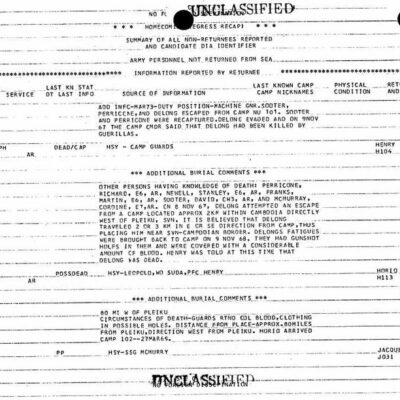
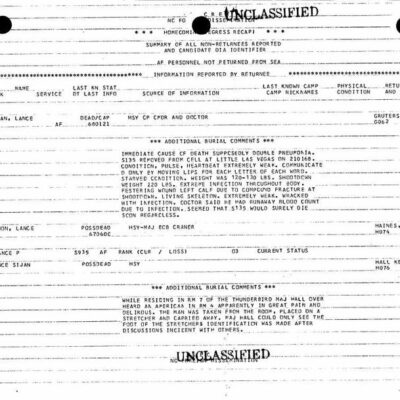
Vietnam War: POW/MIA Summary of All Reported Non-Returnees
$19.50 Add to Cart -
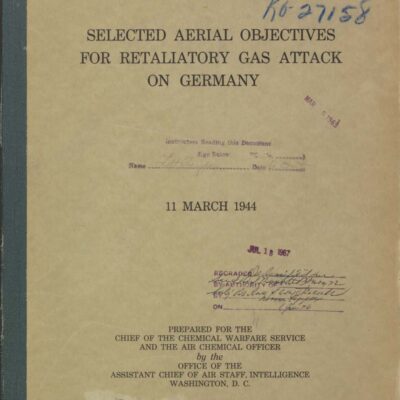
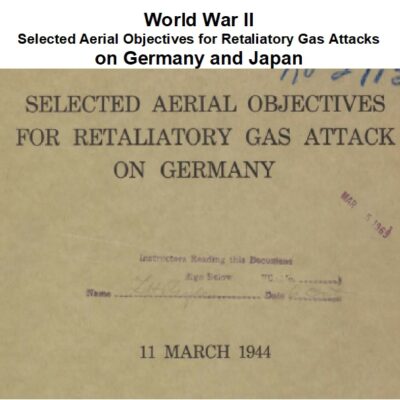
World War II: Targeted Aerial Objectives for Retaliatory Gas Attacks on Germany and Japan
$3.94 Add to Cart -
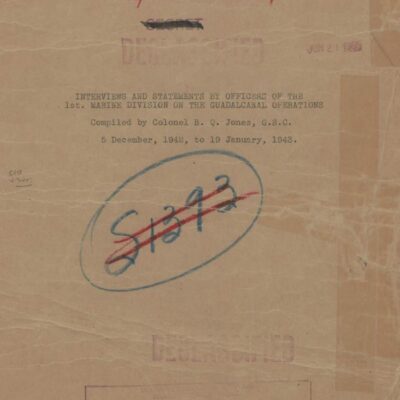
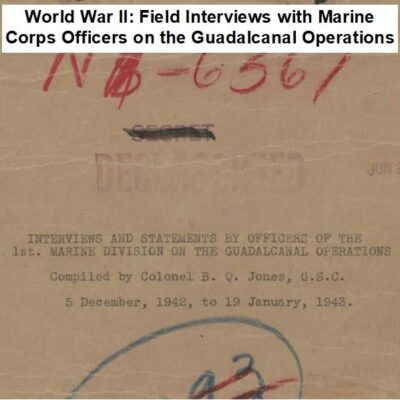
World War II: Marine Corps Officer Interviews on Guadalcanal Operations
$3.94 Add to Cart -

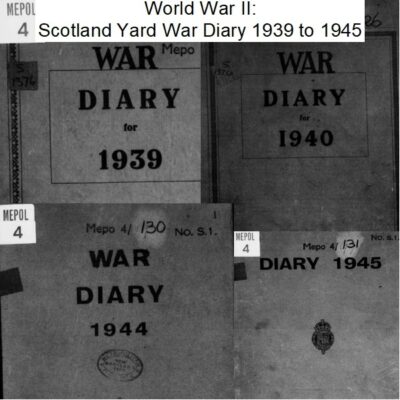
World War II: Scotland Yard War Diary from 1939 to 1945
$3.94 Add to Cart